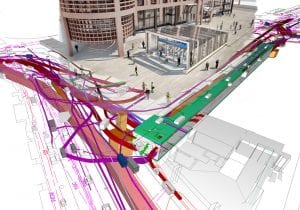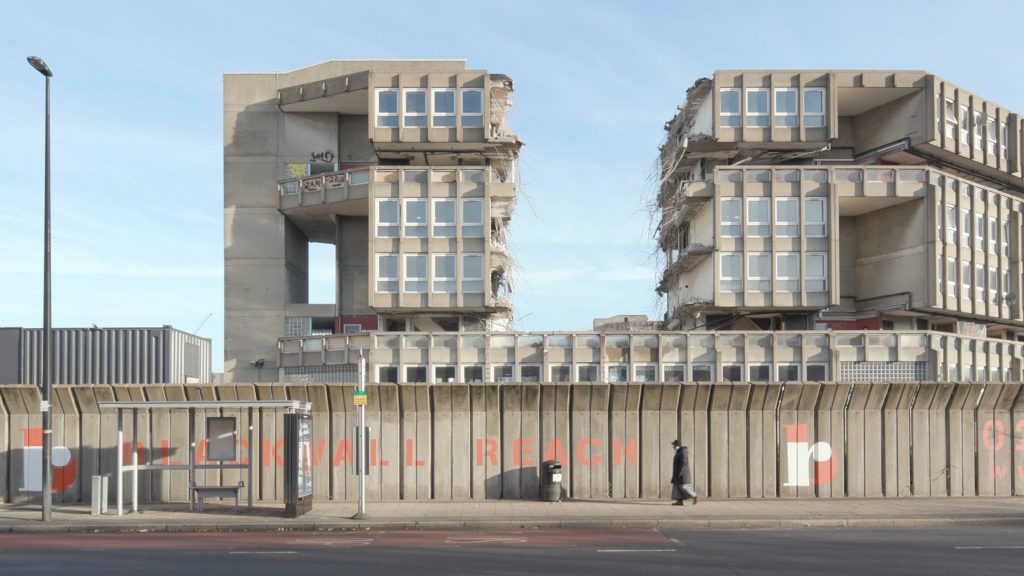It’s already been established that a building can be considered a document in the same way that Briet’s antelope or Grenersen’s land forms can also be documents if they’re ‘consumed’ or ‘read’ in the right way.
While reading around about document theory and buildings in general, I came across an interesting concept called spolia, which essentially considers the recycling of old bits of building into new buildings. And I got to thinking about how these old bits of building tell a story within the new building. A bit like a compilation album — we all remember Dvořák’s “Hovis Symphony” and Grieg’s Nescafé Mood his Peer Gynt Suite. And who can forget the “Old Spice” movement from Carl Orff’s masterpiece Carmina Burana or Khachaturian’s theme for BBC1’s The Onedin Line?

As Heard on TV
There are many examples of spolia in architecture and I don’t have the space to do it justice here. I have a particular interest in the buildings of Beirut and want to use a couple of places I know of to highlight a couple of examples I thought were interesting, and look at how the concept impacts on how we read buildings.
Al-Omari Mosque
Beirut’s grand mosque was built in 1150 as the church of St John the Baptist, itself built on the site of one of the city’s old Roman baths: indeed, the blocks (or imposts) at the tops of the pillars supporting the arches are Corinthian capitals from the Roman thermae (baths). As with many buildings, its use changed over time, and by the 13th Century, following the departure of the Crusaders and the arrival of the Mamluks the church was re-defined as a mosque, with a new entrance and Minaret added in 1350. During the League of Nations-sanctioned Mandate for Syria and Lebanon (the ‘French Mandate’) between 1923 and 1946, the façade was redesigned again, this time by adding a riwaq, or arcade[1]. A comprehensive refurbishment in the early 2000s highlighted many of these aspects of the building’s history and cemented its future as a place of worship with the space originally occupied by the Christian altar at the east end of the building now a door, with an Islaic mihrab on the building’s qibla wall, and a second Minaret constructed on the north-west corner[2]. Thus the mosque tells a story of its entire history, from the earliest days of a structure on the site.
Beit Beirut
Sticking with the Lebanese theme, Beit Beirut is an apartment block turned into a living memorial to the war in Beirut. The building has been left much as it was once the war ended in 1990, including scars from bullet holes and nearby explosions, but with un-adorned structural elements and bracing inserted to keep the damaged structure intact. These elements are painted grey to both show how the building looked after its damage, but also in an attempt to help tell the building’s story. Preservation architect Youssef Haidar describes this concept as keeping the “emotional triggers” instantiated in the building: a sniper’s firing embrasure, for example, accessed from inside the building exits through an old front door in a space less than six inches square. Haider points out that people are afraid of tanks and soldiers, but are not generally scared by a house. Through the adaptation of this space, Haidar states that those fighting turned the house into “a weapon, a killing machine”[3]. This is made all the more emotionally charged because the rooms in question are not behind glass or displayed out of their original context: the building is still easily recognisable as an apartment block, like any other in any city. Ramirex describes Haidar’s treatment of the building as “like a body, like something that is still living… it’s un-flinching, it’s disturbing and it’s moving”[4].
Of course, it’s not just buildings (or indeed adverts) that make use of someone else’s work. Palimpsests are objects made or worked upon for one purpose and later reused for another, in the same way as spolia is classified. It is possible to take an x-ray of works of art by any number of artists from Picasso to da Vinci or Van Gogh[5] to see the artist’s previous works and read previous layers of the canvas. But that’s a story for another day…
[1] Shwayri, R., 2016. Beirut on the Bayou: Alfred Nicola, Louisiana, and the Making of Modern Lebanon. Albany, NY: State University of New York Press.
[2] Ramirez, J. & Sooke, A., 2018. Beirut: An Art Lover’s Guide. s.l.:BBC.
[3] Ramirez, J. & Sooke, A., 2018. Beirut: An Art Lover’s Guide. s.l.:BBC.
[4] Ramirez, J. & Sooke, A., 2018. Beirut: An Art Lover’s Guide. s.l.:BBC.
[5] https://www.abc.net.au/news/2014-06-27/before-and-after-a-history-of-hidden-paintings/5536130







